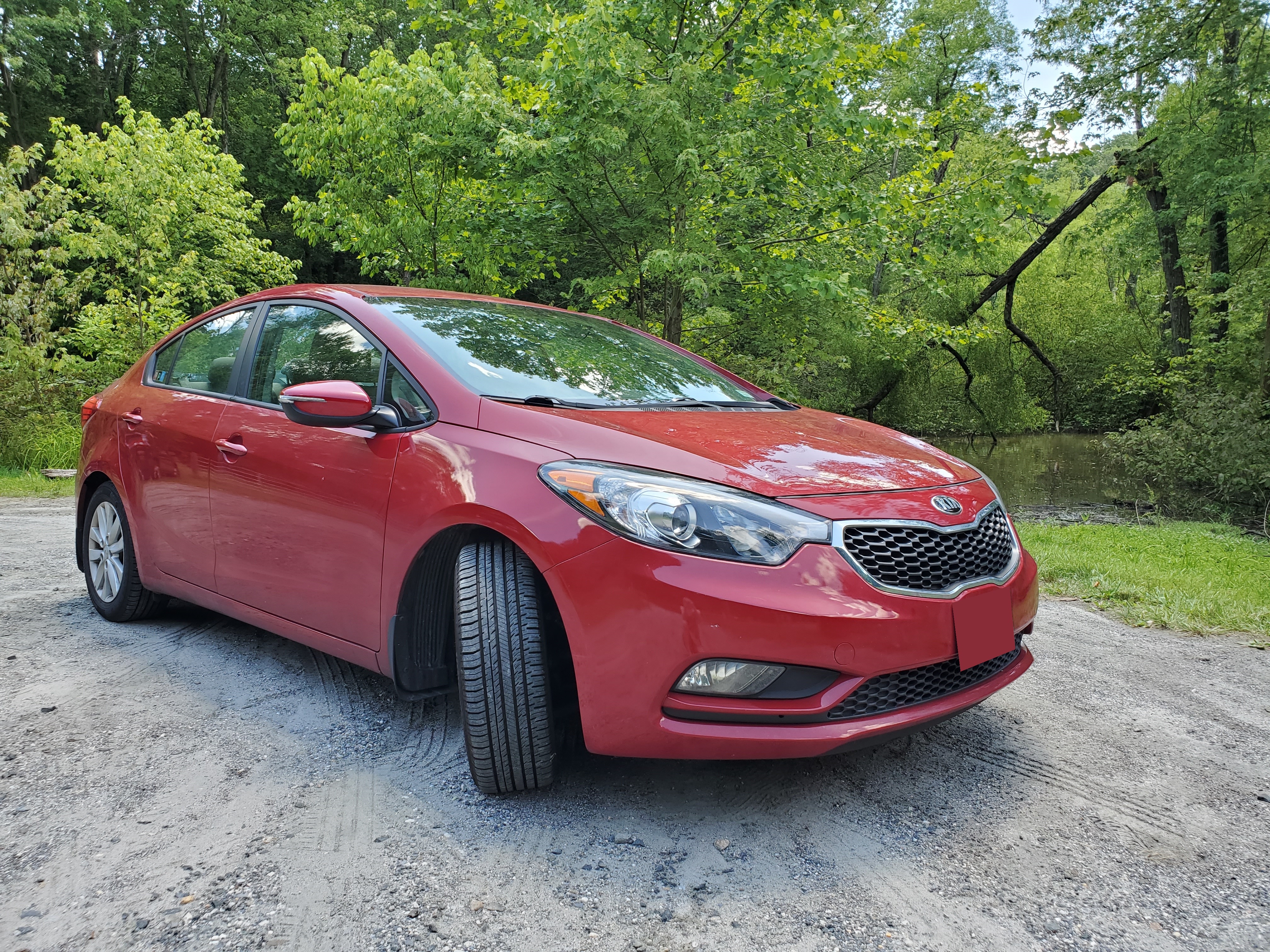
Is Kia really so bad?
The name "Kia" has earned itself some notoriety in American car culture: I remember when I was younger, "Kia" felt like a shorthand, catch-all term for forgettable economy cars that are no fun to drive and less fun to look at. Was this a fair mindset, collectively? Perhaps it was, as Kia, Hyundai, and Daewoo, to a lesser extent, were all working hard to break into the American auto market in the early 2000s. Newcomers to the market seem to always be mocked (perhaps a failing of car culture), but with Korean manufacturers being extremely interested in the American market in the early 2000s, I'm sure that it must have felt like a rehashing of the import car "crisis" of the 1970s and 1980s. The story of the plucky Civic and Camry vanquishing the stodgy, inefficient Malaise-era American offerings is a classic story of automotive history. American automakers took until the 1990s to really catch on to the market trends that Honda and Toyota were driving, but by the 1990s, Japanese "import" offerings (increasingly built in the US), had become safe. They had become the default. So in the 1990s into the 2000s, when Hyundai and Kia were trying to break into the US market, it was a challenge to the status quo, just as Japanese economy cars were in the 1970s. So why didn't we root for Hyundai, as we did for Honda? Why such antipathy towards Korean manufacturers, when we hold Japanese manufacturers and their products in such high regard? Well, at the time, we didn't really root for Honda. We took time to get used to import offerings, and we will take time to adjust to Hyundai and Kia as well. We love an underdog, but we hate challenges to what we assume as the status quo. We can abide by the toppling of huge corporations, punished for their hubris by plucky challengers, but we hate the undermining of what is safe and reliable for us. We feared Hyundai and Kia because they were a threat to the cars we had accepted as safe, as the standard.
In the 1970s and 1980s, American automakers sold their economy offerings as being import-sensible but with domestic value. AMC relied on this narrative to stay afloat, though they were ultimately rescued by Renault (an import brand) before being absorbed into Chrysler. The Big Three needed this narrative, because it was the only narrative they had left that made their products stand out compared to import offerings. So were Kia and Hyundai such a threat in the 1990s and 2000s as Honda, Toyota, and Subaru were in the 1970s and '80s? Probably not-they weren't creating an entirely new segment of compact, sporty economy cars, as Japanese automakers did in the late '70s, but rather, they sought to add their own products to the American economy car sector. They weren't even upsetting the market, like the David and Goliath tale of imports in the '70s did. Korean imports in the 2000s sought to sell cars in safe, proven market segments, so why the negative response? Were they such a challenge? Maybe, maybe not. The treatment of Korean offerings as cheap, unpleasant, rental car-tier products was a culturally reactionary trend that sought to preserve the status quo. Were Korean cars really so bad? Or did their manufacturers make reasonable compromises in their designs so as to make them price-competitive with larger brands? How was the Kia Spectra of the 2000s so different from the AMC Spirit, competing with the Pinto, Vega, and Colt? Cheaply priced, cheaply built cars are not necessarily worse-Price is just as much a metric of performance as acceleration, mileage, space, and comfort. Performance doesn't just mean handling, cornering, and the other metric that sports cars are judged by: in a capitalist market such as ours, "performance" means any metric by which a car is judged when sold. Were Korean cars any objectively worse? Probably not, but cheap cars are easy to make fun of, because too many people forget that affordability and reliability are performance metrics. In short:

What is it like?
The 2015 Kia Forte is similar in some regards to the Hyundai Elantra, and in fact uses Hyundai's 2.0L Nu engine. It features the same suspension layout as the Elantra, with front MacPherson struts and a rear torsion beam, and little details like the engine compartment layout are also very Hyundai. Kia, however, adds their own touches, and ultimately, the Forte feels like its own car, rather than like an Elantra But Different.
The Forte has a fun sense of style to itself: Kia did a good job giving their compact sedan a unique, emotive feel to it. Outward styling is safe enough, but keeps the sharp light fixtures and grille design that Kia is so fond of, as well as a streamlined shape and plastic lower bumper that give the Forte a slightly sporty feel. As do all compact sedans from the 2010s, the Forte adopts the long-nose, short and tall boot shape that was pioneered by the eighth-generation Honda Civic, but the Forte moves the passenger compartment rearwards, lengthening the nose and giving it a sporty, rear-wheel-drive shape. Yes, we are at the point that front wheel drive cars are styled to look rear wheel drive, because we all know that rear wheel drive cars are Just Better or something.

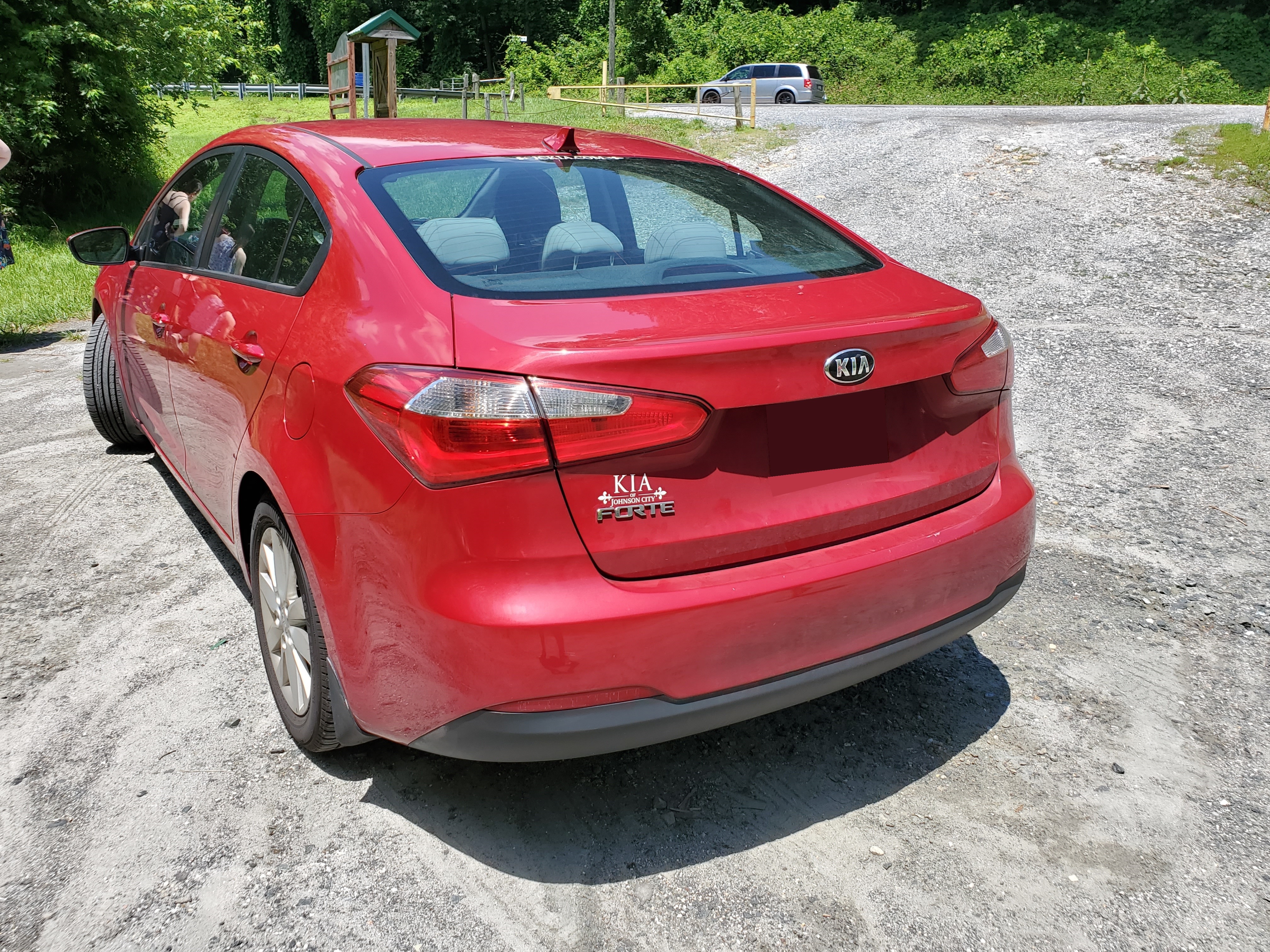

The interior of the Forte is immediately welcoming, and Kia thankfully designed it such that there are no surprised whatsoever. Every single control is exactly where it should be, and the Forte is easy to just pick up and drive, so to speak. Kia placed the clock and thermometer above the normal dashboard, making it easy to see for everyone in the car (more cars should do this!) and this model came with a small infotainment screen instead of a buttons-and-knobs radio interface. Interior materials are nothing to write home about; most surfaces are hard plastic, and are therefore easy to clean, but also easy to spot dust on. The steering wheel is a soft, easy to grip leatherette, and all the buttons feel solid enough. Overall, the interior of the Kia Forte is perhaps slightly cheaper than might be expected of a car in its segment, but is still perfectly serviceable, with modern functionality and device connectivity. And remember: objective interior quality doesn't matter if the only parts of the interior you really interact with are the driving controls and the stereo. Who cares about "cheap" materials if you never actually touch them and look at them? Expensive car interiors do more to reinforce the aesthetic the car presents than they do to affect the driver's experience.
The "info" part of the infotainment screen primarily comes from the Forte's backup camera. Rearward visibility is fine in most respects, with generously sized side mirrors and a big rear window, but as with all sedans shaped like this, the rear window sill is high up, forcing the driver to rely on the camera to avoid bumping the car or wall they're backing towards. The backup camera display isn't too sharp, but is bright and works perfectly fine for what it needs to do. Overall, the use of a screen for the stereo system means more about packaging functionality into a small and simple form factor than it means about having a sophisticated media center.
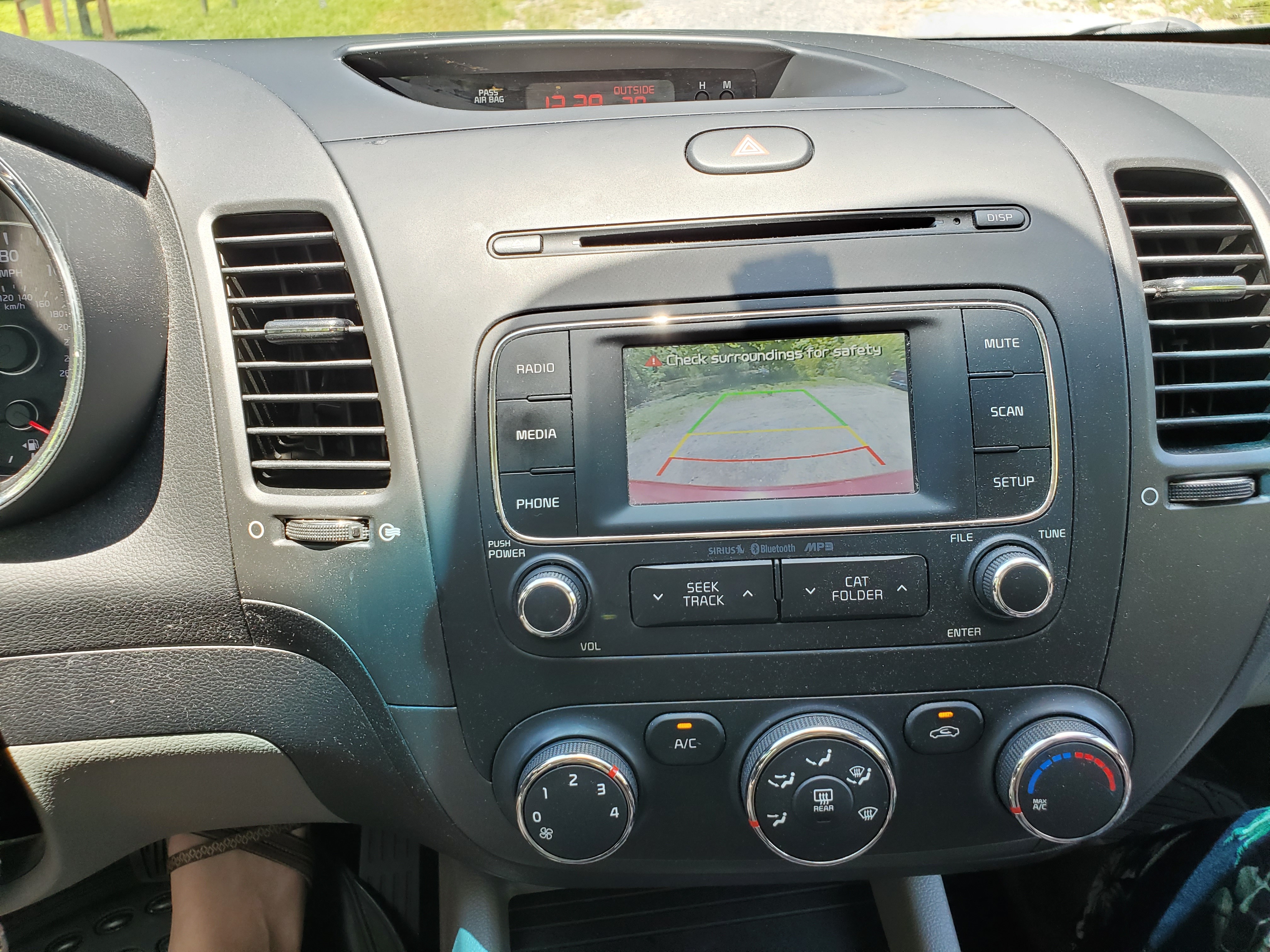

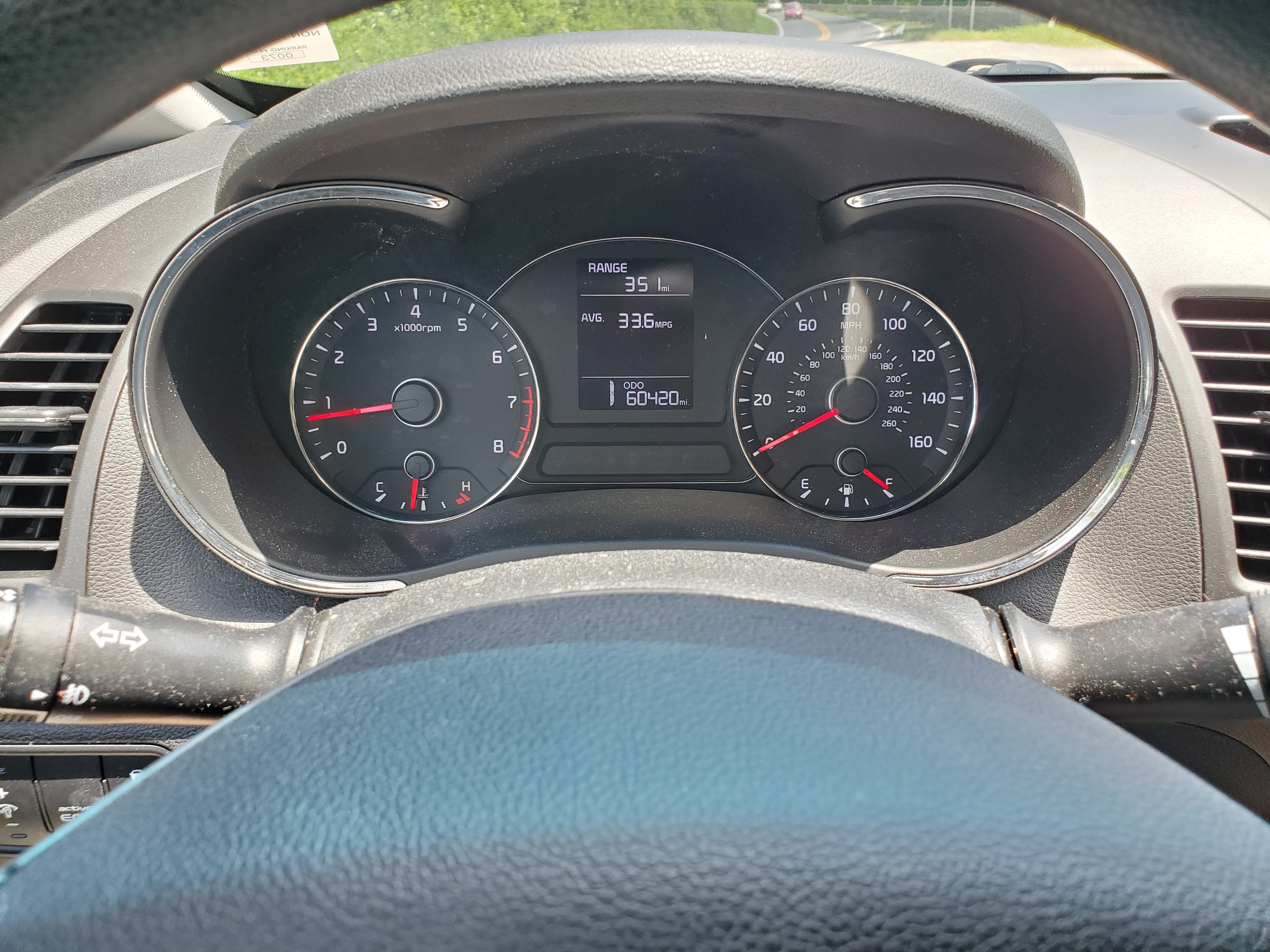
The seats are comfortable, but are nothing to write home about. Front seat positioning is a little far back with respect to the B-pillar, and driver's side head checks are sometimes blocked by that pillar. Front seat headroom is limited but present, but back seat space is absolutely huge. Moving the peak of the roofline rearwards meant that Kia opened up a lot of space for the back seat, and the back seat passengers get plenty of space, plenty of light, and nice big doors too. The Forte does not treat the back row like an afterthought, but rather, expects the back seats to be used nearly as often as the front. Many similar compacts cannot say the same. The trunk is sizeable, but the C-pillar bolsters behind the rear seats constrain available space worse than other compacts. Since most users likely won't use 100% of the available trunk space all the time, this probably isn't an issue, but for loading large items that require the seats to fold down, the user may start to feel cramped. The 2015 Forte is, however, a completely sensible car.
How is it to drive?
The Forte drives like an economy car. That's it.
Steering is just as easy, or just as difficult, as it should be. What feels like electric power steering has heavy assist at slow speeds, making parking easier, and with the grippy wheel texture, palming the wheel around is effortless. At higher speeds, steering gets tighter, and at highway speeds, the Forte does not feel floaty or unresponsive in the slightest. Cornering is a different story than steering however: the car understeers noticeably, though body roll is controlled. The Forte seems to cope with its rear torsion beam worse than its sibling the Hyundai Elantra does. The sensitive steering makes the car controllable in turns, but the lateral acceleration performance envelope is limited (exacerbated by the efficient tires, I'm sure): This is a sensible daily driver, not an autocross monster.
Outside of cornering, the suspension handles itself well. Bumps are attenuated well, but road feel isn't compromised, with the suspension offering the driver a good level of feedback on the road. The car doesn't feel too bouncy, and on rough roads, passengers aren't jolted around badly. For normal circumstances, the Kia Forte is quite comfortable to drive, with easy but sensitive steering and a ride befitting of its size and weight. This is clearly not a luxury car, but should be fine for longer commutes and road trips regardless.
Where the steering is sensitive, the throttle is not. I believe the Forte gets the 2.0L Nu engine from Hyundai, but unlike the 2017 Elantra I drove, which had the Atkinson-cycle variant, this Forte gets about 160 horsepower and about 150 lb-ft of torque. This seems like a handsome amount of power for such a car, but the throttle logic makes that power largely inaccessible. Burying the throttle will get the engine to work, but that's far down the long travel of the accelerator pedal, and for most of its travel, the engine is completely unresponsive. Fine speed control is easy because fine speed control seems to be what 50% of the pedal's travel is for. Acceleration is delayed and rather numb, though even when it works hard, the engine still stays quiet and smooth, for the most part.
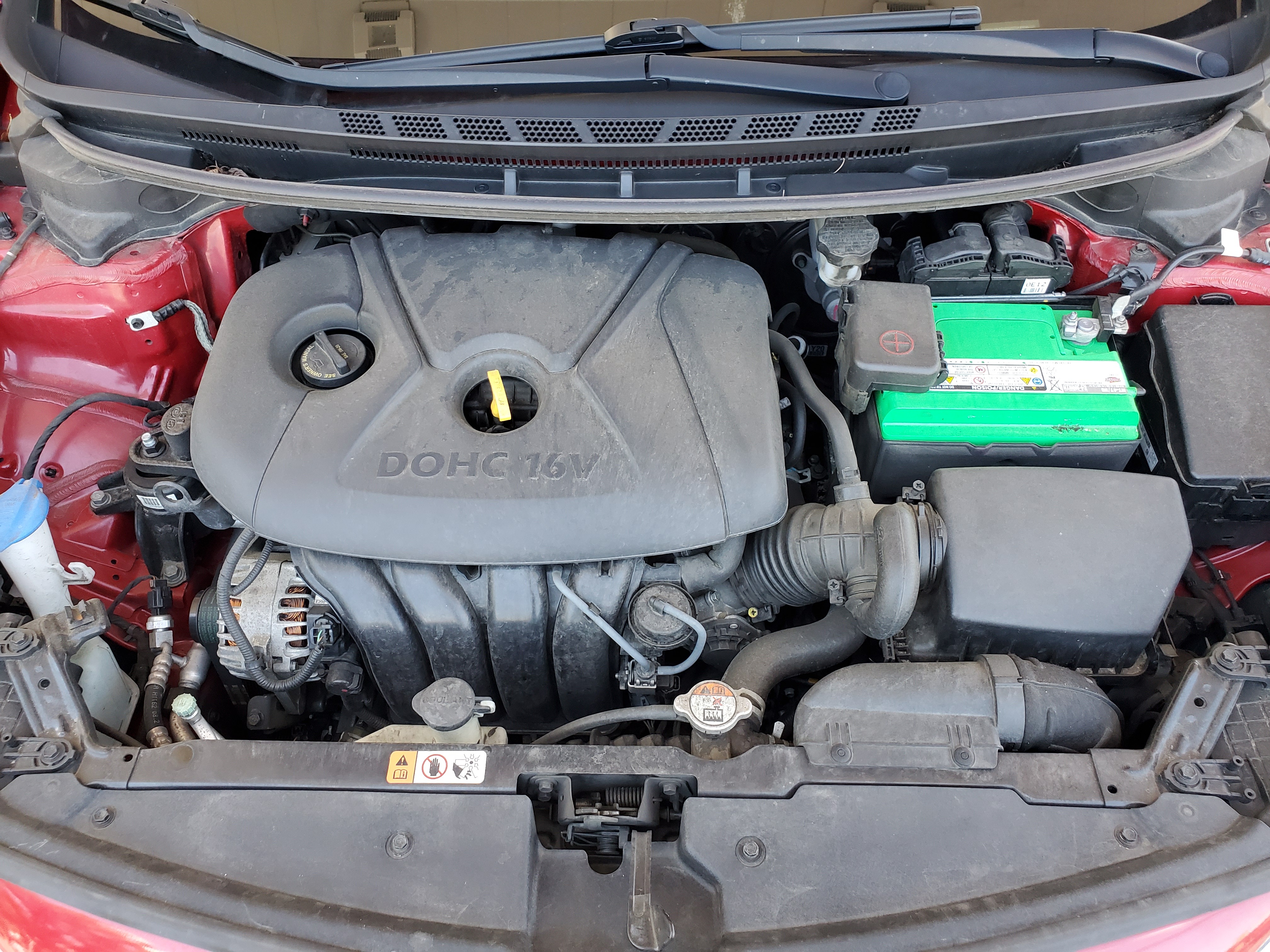
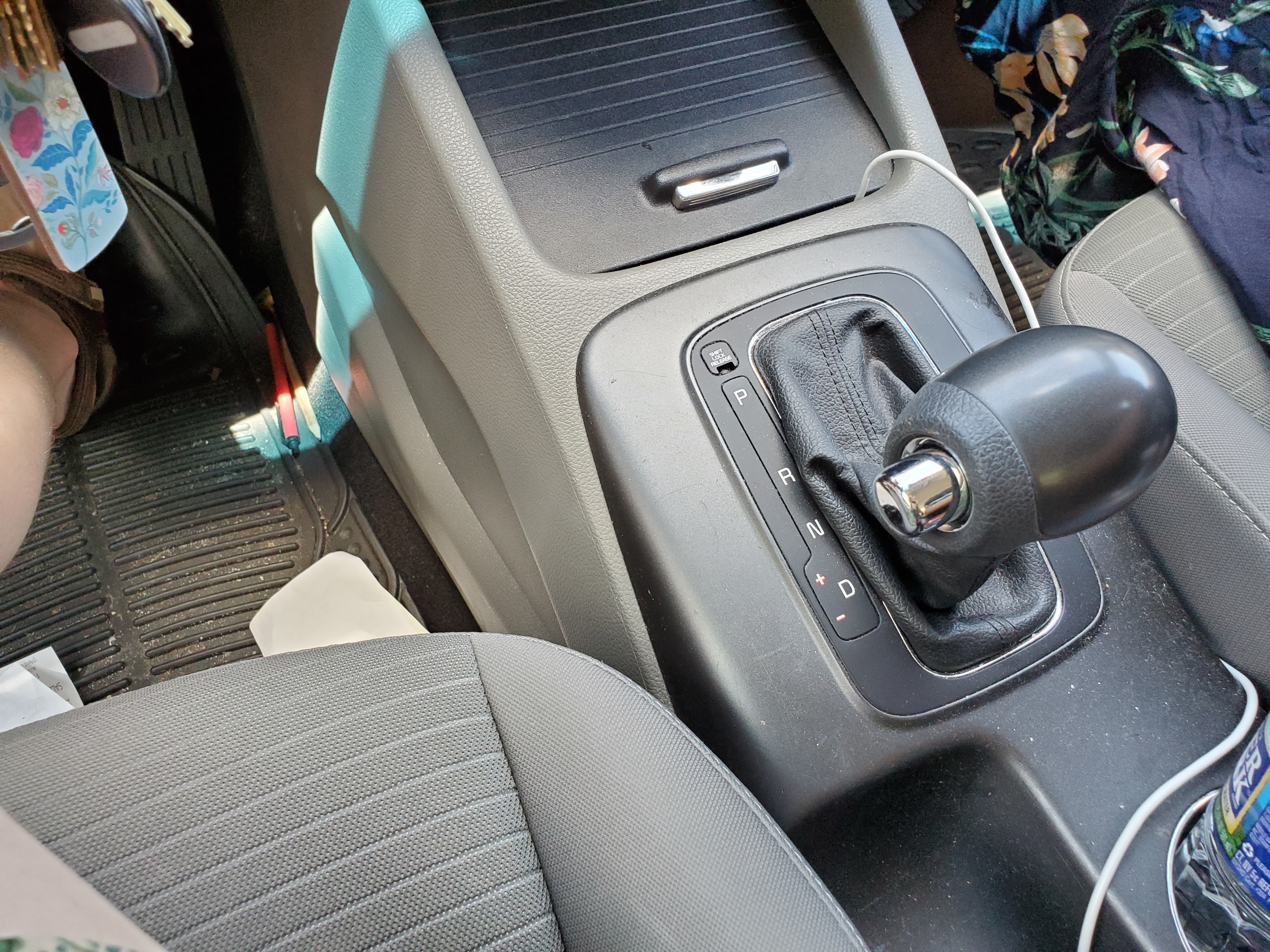
The transmission is similarly economy-minded as the engine's throttle logic. Upshifts come early, of course, but the six-speed automatic shifts incredibly quickly and smoothly: the new Forte with Kia's CVT probably feels almost exactly the same to drive, since this automatic shifts so smoothly. The transmission is of course not programmed for enthusiast driving, but thankfully comes with a manual mode, for when the driver feels the need to get worse gas mileage. Manual shifts are of course as smooth as automatic ones (this transmission's downshifts are hardly noticeable!), and the delay between shifter input and gear change is quick. This is one of the easiest-driving manual-enabled automatic transmissions I have yet driven: if you like shifting for yourself and hate clutch pedals, you may well enjoy the Forte's transmission. The shifter itself is Kia's typic T-grip type, but feels less awkward in the hand than Dodge's T-grip shifter. The Forte has no Sport mode, but does have an Eco button: in Eco mode, the engine revs even slower (if that's possible) and the transmission optimizes even harder for higher gears: I had Eco mode off for my test drive and still got 34mpg on average, which seems quite good for a car like this. The Kia Forte is reasonably fuel efficient, with the new CVT-equipped 2019 likely becoming even smoother to drive and more efficient, but unfortunately it seems that fuel economy has largely plateaued for conventionally powered cars: This 2015 Kia Forte only gets marginally better fuel economy than my 2006 Honda civic, which has an older engine and fewer gear ratios.
Overall, the Kia Forte is a car that has been carefully designed to be pleasant to drive (in a general use case, rather than enthusiast driving), pleasant to travel in, and comfortable and practical, despite some compromises that were made in interior design and the suspension architecture. The Kia Forte knows exactly what it needs to be good at, and knows what it can afford to skimp on: this is a better-optimized economy car than many of its competitors, seemingly unaffected by the inflation of size, power, capability, and features that seems to happen with subsequent models.
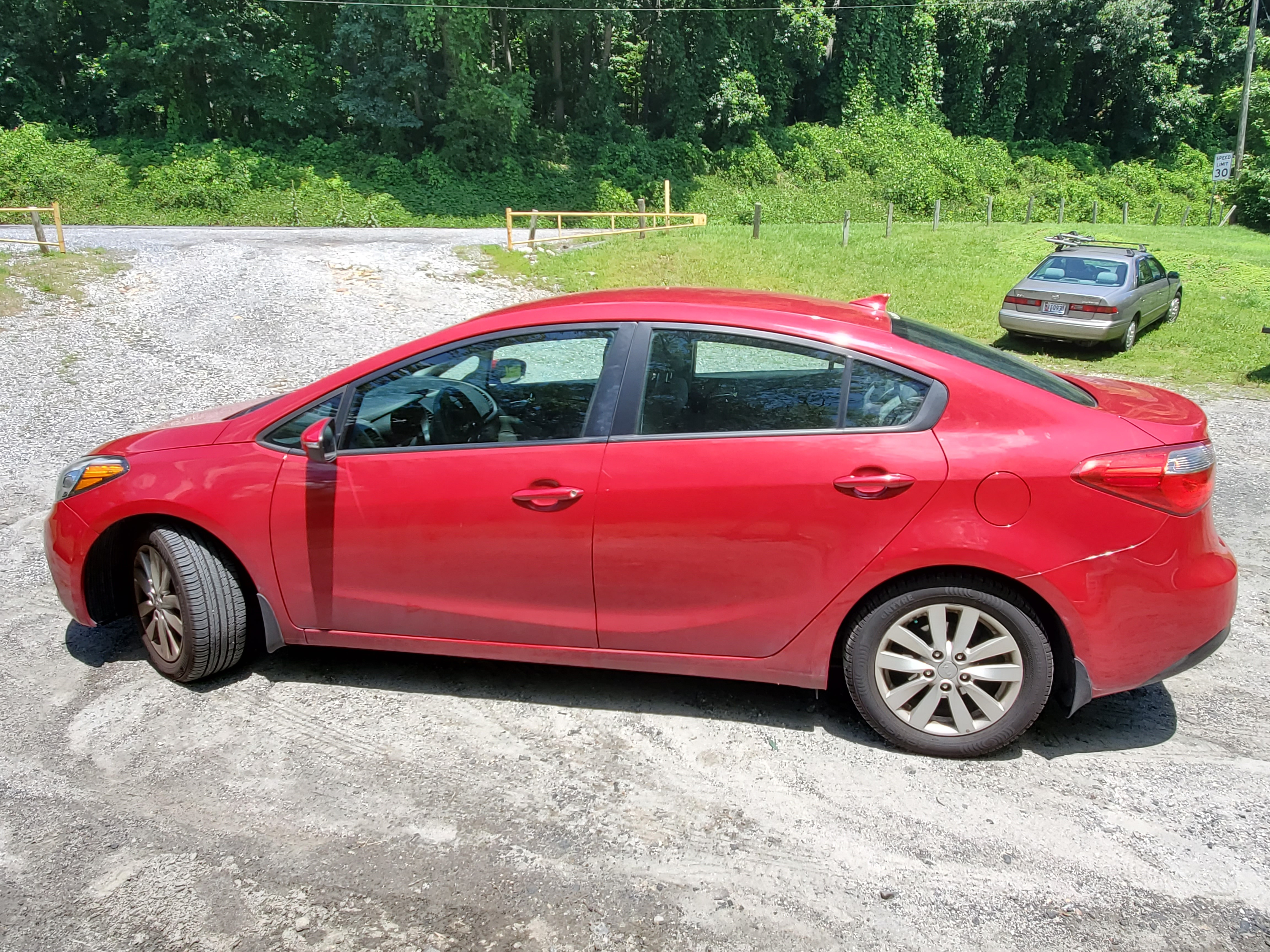
Are Kia cars as miserable as some people make them out to be?
Well, it depends. Overall, however, the Kia Forte,as Kia's bread and butter compact sedan, is not a miserable car. This is a car that, like many other good economy cars, has its priorities straight. Overall power matters for highway cruising, particularly in the mountains, but that power is buried deep at the bottom of the long travel of the accelerator pedal; normal driving uses a fraction of the power this car can produce, but for a car like this, that's fine! Yes, throttle response is slow: downshifting manually helps get revs up, but ultimately, the Forte needs a good run up to pass anyone. Remember what people buy this car for, though: this is a dedicated daily driver, a commuter, a small family car. Maximum power and torque don't matter, handling doesn't really matter. What matters is that the kids have plenty of space in the back, all their fencing gear can sit in the trunk, and their moms have a comfortable suite of driving and entertainment features up front.
The Kia Forte is a car that is secure in being what it is: too many economy cars pretend to be sporty, pretend to be offroad-capable, pretend to be the premium vehicles they aren't. The Forte has no such pretentions, and that's refreshing. The response a work of art, or a commercial product, provokes in the consumer is twofold: what it implies, and what its implications make them feel, and what it does, and how that makes them feel. The Kia Forte is a car whose implications and physical nature align perfectly. The identity the Forte purports to have is the identity it actually holds. This is a realist car, that is intended to be evaluated and consumed as it is at face value. In an increasingly grandiose market full of illusions of grandeur, the Forte is a refreshing moment of lucidity. If you like honesty in the art and products you consume, then look no further than the Kia Forte. This car will never lie to you about what it is.
If you're the kind of person who goes on at length about the dearth of manual transmissions in modern cars, and the prevalence of front wheel drive and torsion beam suspension, then yes. You will find the Forte unresponsive, jittery, and and reluctant to corner. But remind yourself that Kia's first priority was never to make sporty cars. Kia's first priority was to become a household name in the US auto market, and they have succeeded. Say what you will about how modern cars can't handle, but they're safe, efficient, and have the features that people want, so are they really that bad? Everybody loves their car for their own reasons, and those reasons don't have to involve autocross, or cat deletes, or heavy camber. Besides, shouldn't you be off putting Recaros in your EF Civic or something?